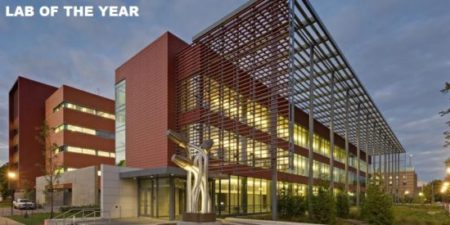
Transportation
 Increasingly, the intersection of urban planning/mass transit, high-density research environments, and energy-efficient building designs and the emerging next generation of research tools is pushing the limits of standard low-EMI approaches in facilities. FMS represents the next-generation of EMI field management – with innovative approaches and new technologies that address this intersection.
Increasingly, the intersection of urban planning/mass transit, high-density research environments, and energy-efficient building designs and the emerging next generation of research tools is pushing the limits of standard low-EMI approaches in facilities. FMS represents the next-generation of EMI field management – with innovative approaches and new technologies that address this intersection.
Rail, light rail, subways, bus, airports can affect localized medical, scientific, research facilities, and communication systems. For example, electric powered rail trains may cause interference with flight operations and navigational aid systems due to radio-frequency (RFI) and electromagnetic interference (EMI) emissions from the trains and the associated overhead contact systems (OCS). FMS conducts environmental impact studies and compliance analysis studies coordinated with city/county municipalities, state, and federal agencies.
RAIL, LIGHT RAIL, SUBWAYS:
Operation of light rail or subway systems produce transient magnetic fields that perturb the static background magnetic field (which is primarily the geomagnetic field). There are two components to the magnetic field impact from the light rail system:
- Magnetic fields are produced by the flow of electric currents in the cables and rails of the DC traction system, i.e., the currents that power the light rail vehicles. Currents flow from traction power supply substations (TPSS) to the trains (returning on the rails).
- Background magnetic fields are focused by the ferromagnetic (steel) mass of the light rail vehicles, causing localized magnetic field shifts as trains pass.

Both of these components combine to produce changes in the ambient magnetic field environment with characteristic time-scales typically ranging from a fraction of a second to tens of seconds. The magnitudes of these magnetic field changes are generally strongest near the alignment and decrease moving away from the tracks. Such magnetic field changes can interfere with the operation of sensitive instruments and measurement systems used in research in the physical, biological and health sciences.
Increasingly, the intersection of urban planning/mass transit, high-density research environments, and energy-efficient building designs combined with the emerging next generation of research tools is pushing the limits of standard low-EMI approaches in facilities. FMS represents the next-generation of EMI field management – with innovative approaches and new technologies that can enable new architectural paradigms for research environments.
AIRPORTS:
Transportation facili ties can be high intensity, high density RF environments. Airports utilize radar, landing systems, security systems and communication systems which rely on wireless systems.
ties can be high intensity, high density RF environments. Airports utilize radar, landing systems, security systems and communication systems which rely on wireless systems.
Passports are being issued with RFID chips in many countries. RF safety – keeping people safe and keeping devices and networks operational is an integral component of the planning and design process.
Transportation Projects

FMS as the EMF/EMI Consultant designed and installed the passive and active mitigation systems for this newly established interdisciplinary organization under the Office of Research of the University of California Irvine (UCI) to house state of the art electron-microscope labs (4 imaging cells). The project required analysis of interference potential of all internal and external emission sources, which included vehicle and facility elevators (DC), broadband electrical system (AC) sources, etc.

FMS was engaged as the project’s EMI Consultant by the project architect (Wilson Architects) to conduct an electromagnetic field (EMF) analysis in an existing laboratory (shell space) located in the basement level of the Harvard CNS facility.

Seattle Children’s Research Institute is currently in the construction phase of ”Building Cure”, a 540,000 square foot research building, which will be dedicated to developing therapies for children with diseases such as Cancer, Type 1 Diabetes and Sickle Cell Anemia.

FMS was engaged to conduct a thorough assessment of the building’s design for EMI interference threat concerns to sensitive research equipment. A document review and extensive 3-Dimension computer simulation studies were conducted to evaluate EMF emissions from the building’s electrical distribution, mechanical and other systems.

Over its 20 years, FMS has successfully completed hundreds of EMI projects which included a diverse range of consulting and mitigation services.
Take a look at a list of the markets we serve »

